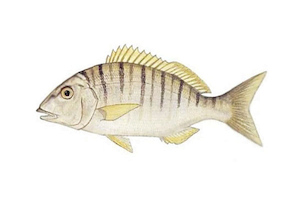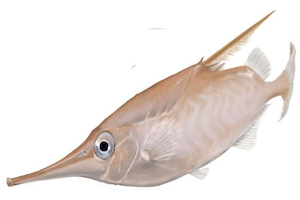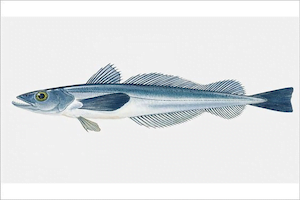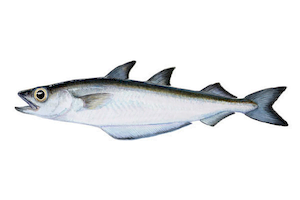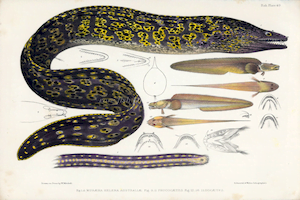Coris Julis
– Mediterranean Rainbow Wrasse –
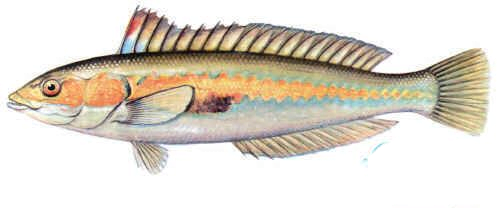
| Conservation status |
|---|
 Least Concern (IUCN 3.1)[1] |
Coris julis (Linnaeus, 1758)
| Kingdom: | Animalia |
| Phylum: | Chordata |
| Class: | Actinopterygii |
| Order: | Labriformes |
| Family: | Labridae |
| Genus: | Coris |
| Species: | C. julis |
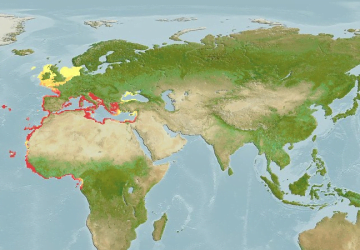
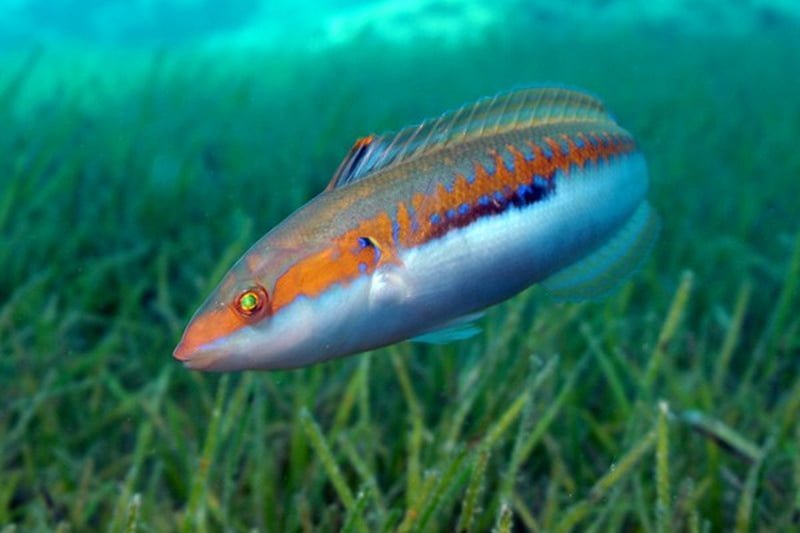
The Mediterranean rainbow wrasse (Coris julis) is a small, colourful fish in the family Labridae. It can be found in the Mediterranean Sea and in the northeast Atlantic Ocean from Sweden to Senegal (though it is a rare wanderer to the southern British Isles).[3][2] Records of this species south from Senegal and the Cape Verde Islands are actually the closely related Coris atlantica.[2]
It feeds on amphipods, isopods, sea urchins, polychaete, shrimps, and small gastropods.[2]
Description
Like many wrasses, C. julis is a sequential hermaphrodite: All start in the smaller initial phase. These initial-phase individuals (both females and males) can turn into the larger secondary-phase males.[4] At a length of about 18 cm (7.1 in), all individuals are secondary-phase males.[2] The maximum length for the species is 25 cm (9.8 in). There is a marked difference in the appearance of the two phases. In the Mediterranean Sea, the secondary-phase male is green, blue, or brown, with white belly, a dark blue spot over the ventral fin, and a bright orange band on the side, while the smaller primary-phase females and males are brown with yellowish sides and white bellies.[5] Populations in the Atlantic differ in colour and genetics from the Mediterranean population, but are maintained in a single species at present.[1][4] If found to be separate, the scientific name Coris festiva (at present considered a synonym of C. julis) is available for the Atlantic population.
Habitat
It is typically found near the shore in places with seagrass or rocks. It is usually found at depths of 0–60 m (0–197 ft), but occurs as deep as 120 m (390 ft).[2]
Distribution and Habitat
This fish is widespread in the Mediterranean Sea and in the eastern Atlantic Ocean from the English Channel to Central Africa .
It inhabits rocky or Posidonia bottoms , it is a strictly coastal fish and its bathymetric diffusion ranges from a few centimeters to (exceptionally) 120 meters deep. It lives on rocky coasts often in the less frequented harbors, among the rocks of the cliffs.
Biology
Reproduction
The damsel is a protogynous species : individuals (sexually active at 1 year) are born female and as they age they become males. Studies have shown that all individuals over 18 cm are male. The sex change takes about 5 months. The transparent yellow eggs are laid between April and August.
Alimentation
It feeds on algae , amphipods , copepods , sea urchins , worms , shrimp and snails .
Fishing
Generally it is not subject to specific fishing given the poor quality of the meat, suitable only for fish soups (for example the cacciucco from Livorno), however it voraciously bites to animal baits of all kinds, often causing a lot of trouble to those who want to dedicate themselves to fishing for more valuable species [4] . In western Sicily and Reggio, where it has the common name of viola , it is eaten floured and fried.
Curiosity
The title of the film Viola di mare , by Donatella Maiorca (2009) refers to this species .


















